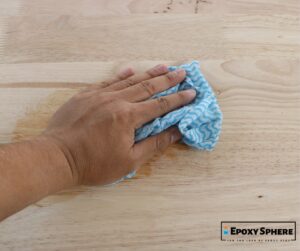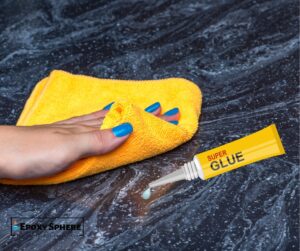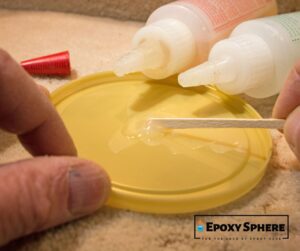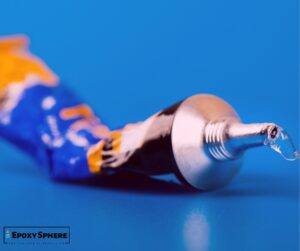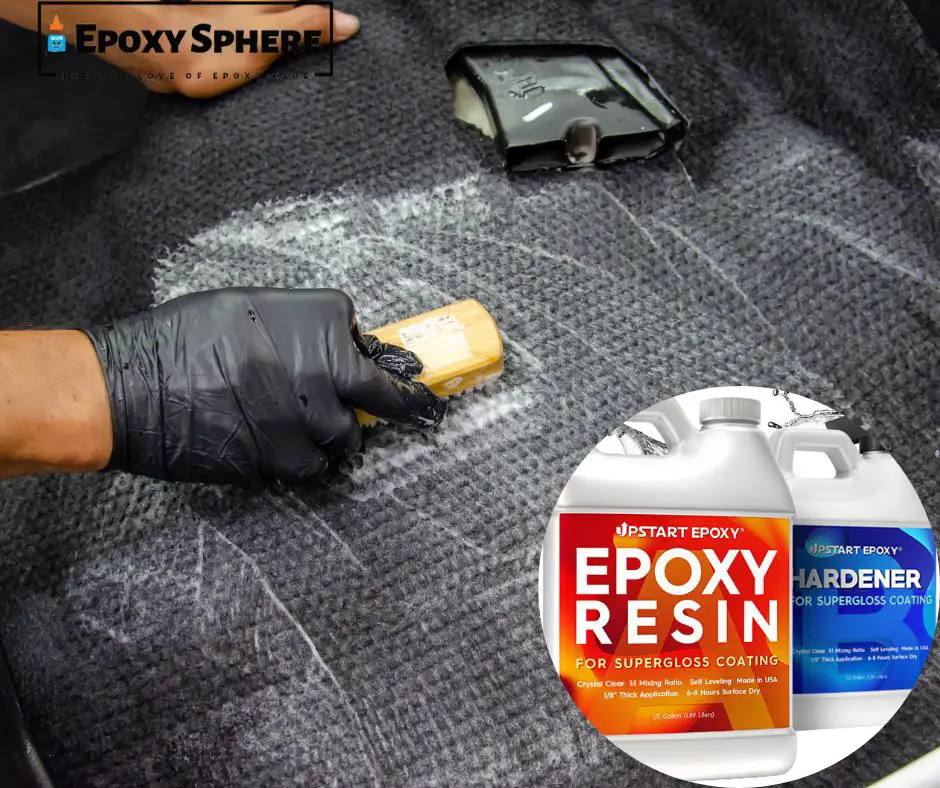
Epoxy is a great product to use on your floor. It protects the underlying concrete from moisture, stains, grease, and cracks. It also saves you a great deal on cleaning and maintenance costs. But can you epoxy over carpet glue?
You can’t use epoxy over carpet glue. Even small amounts of glue will affect the bonding of the epoxy. The adhesive used in carpeting is strong enough to hold up under foot traffic, and epoxy will perform a similar function seamlessly.
However, if you try to apply epoxy over existing carpet glue, it won’t adhere properly and may result in peeling or bubbling later on down the road.

Carpet Glue Explained
Carpet glue is a type of adhesive used to hold carpeting in place. It works by chemically bonding the carpet fibers and backing them together, producing a powerful bond sufficient for use over time. This makes carpet glue a valuable tool in ensuring the carpet goes smoothly on the floor or wall.
Why You Shouldn’t Use Epoxy Over Carpet Glue
For many, using epoxy over carpet glue is a no-no, and for a good reason. For one, the two are not compatible. Epoxy is a powerful adhesive and can often be much more potent than carpet glue. Here are other reasons why you shouldn’t consider adding epoxy over your carpet glue:
Creates a Barrier Between the Epoxy and The Carpet Material
If you are attempting to put epoxy on top of carpet glue, don’t. This is because the carpet glue will create a barrier between the epoxy and the carpet material. The bond will also not adhere because there is no direct connection between your two materials. This creates an area where the glue doesn’t hold up well and can lift away from your flooring, creating gaps in its bond.
This Leads to Poor Attachment
You should not use epoxy to attempt to glue down carpeting over the glue. The glue underneath the carpet will prevent the epoxy from bonding with the rug, and as a result, your floor will be weak and prone to sagging. This can cause many problems in the future, especially if you are trying to build something overtop, like furniture or a corkboard.
The Bonding Won’t Last Long
Even if you can achieve a good bond with epoxy over carpet glue, you still have to worry about the longevity of such a bond. Both adhesives are made from different chemical components and, as such, can over time, counterbalance each other. The presence of pressure over the carpet and moisture and humidity will hasten the weakening of the short bond you have.
How to Use Epoxy on Carpet
Thankfully, you can use epoxy on the carpet by applying a thin layer of epoxy to the area of your carpet that you would like to bond with the flooring.
It’s vital to ensure no open seams or cuts in any part of the substrate before applying epoxy, as this will prevent complete adhesion between the two surfaces.
To apply your epoxy on the carpet, follow these steps:
Rid Your Carpet of Old Glue
If you have a lot of carpet glue to remove, using a carpet cleaner is the best way to do so. You can hire one or rent one from your local hardware store. Use the hose attachment and spray directly onto the glue until it’s almost gone, then use an upholstery brush to get rid of what remains.
If you’re removing just a little bit of glue and don’t have access to a carpet cleaner, there are other ways to remove it yourself. You can use an old credit card or metal scraper on your carpet where you want to remove excess glue.
Press firmly down on this tool while scraping up towards yourself in order for it to work correctly without damaging your carpet. You may need several passes before all parts are cleaned off thoroughly, but if done correctly, this method should work well enough without any issues.
Use an Adhesive Primer to Clean Your Carpet Further
If there is still leftover carpet glue, you can use an adhesive primer to help you remove them quickly. These cleaning agents are designed to remove loose dirt and grime from your carpet. They’re usually made with a combination of solvents and surfactants. The best part? Adhesive primers are available at most hardware stores, making them easy to find.
Apply a Thin Layer of Epoxy on The Carpet Area
To get the job done, apply a thin layer of epoxy to the carpet area. Start by rolling on the epoxy with a paint roller, ensuring you don’t put too much. The goal is to have even coverage without large areas with too much or insufficient resin.
If you’re worried about having enough epoxy on hand, you can always add more later if needed. But it’s always better to start with less and add more if needed than vice versa.
Attach Your Carpet to The Floor and Apply Slight Pressure
Once you spread your epoxy over your carpet, you should attach your carpet to the floor and apply slight pressure. Don’t overdo it, or you’ll press too hard and force the glue to spread out, which can lead to excess epoxy on one end and a shortage on the other.
Benefits of Using Epoxy on Carpet
Epoxy is an excellent choice for carpet glue because:
Protects the Underlying Concrete
Epoxy is a great product for carpets since it helps prevent moisture, stains, grease, and cracks from forming on your concrete floor. Epoxy is also ideal for concrete floors because it’s durable and provides excellent protection against everyday wear and tear.
The epoxy coating will help keep moisture out of the underlying concrete so that you don’t have to deal with mold or mildew growth inside your home.
Save You a Great Deal on Cleaning and Maintenance Costs
Epoxy is durable, long-lasting, and makes your carpet easy to clean. This way, you don’t have to worry about your carpet peeling off the floor soon, and you can also easily clean your carpet with little or no worry about ruching it with your action.
Reasonably Priced for The Duration and Level of Protection that It Offers
If you’ve ever screwed up your carpet installation, you probably know that carpet glue is a pain to get off when you want to replace it. Thankfully, epoxy is an alternative that offers the same benefits as the original.
It’s more durable than carpet glue and can withstand stress better. Most importantly, epoxy has a longer lifespan than most other adhesives on the market.
Conclusion
Epoxy is one of the most popular choices for flooring because it is durable and easy to clean. You can also use it in place of carpet glue but never use it over carpet glue. Always remove your carpet’s glue before attempting to apply epoxy to it.
While technically, you can epoxy over carpet glue, the bond will not be as strong as it could be. This is because the epoxy does not bond to the carpet glue and will lead to many problems. It may not happen immediately or on all parts of your flooring, but eventually, it will happen.

Hi, This is John Davis. After years of working in the construction industry, I decided to create a website that would provide people with information about glue and its exceptional uses. I hope You find it useful

